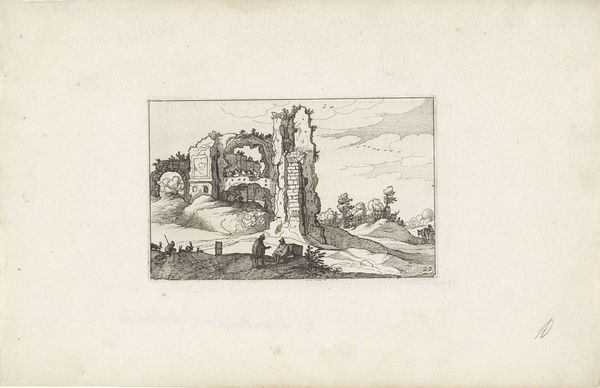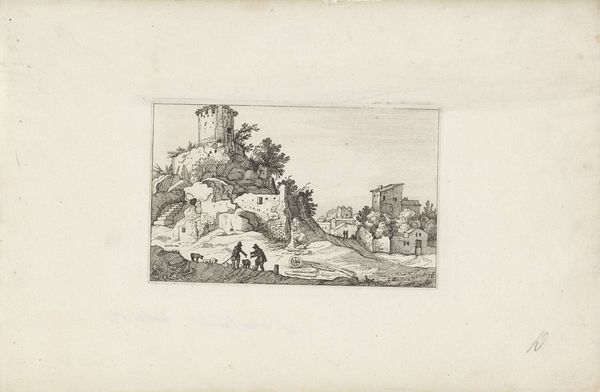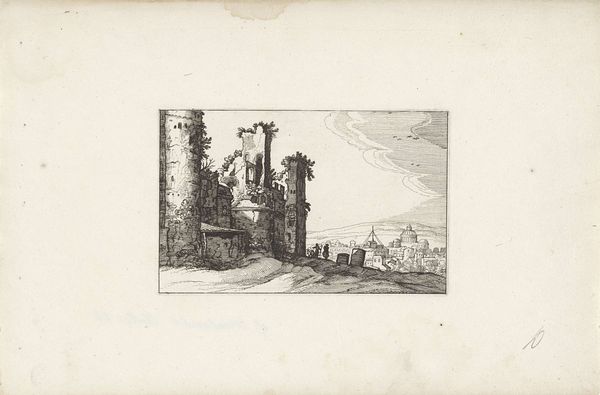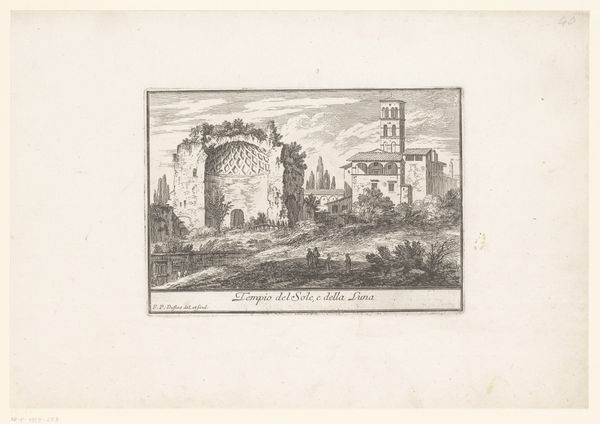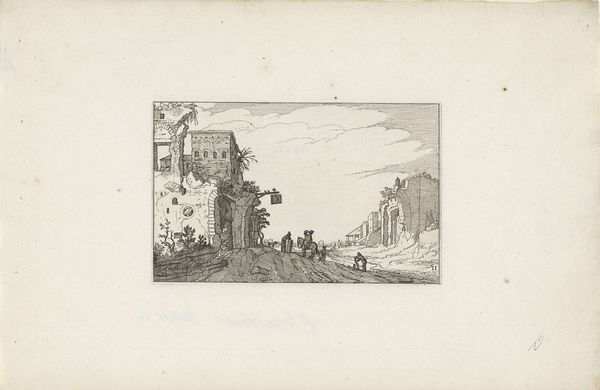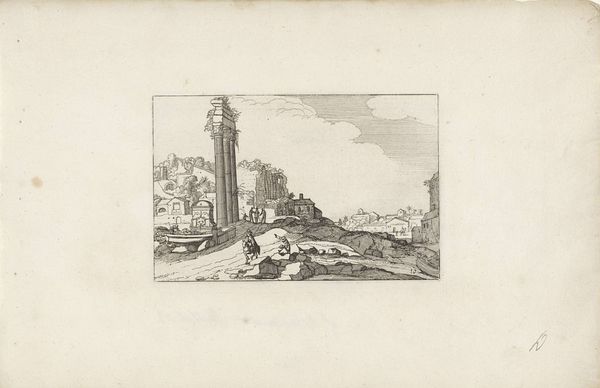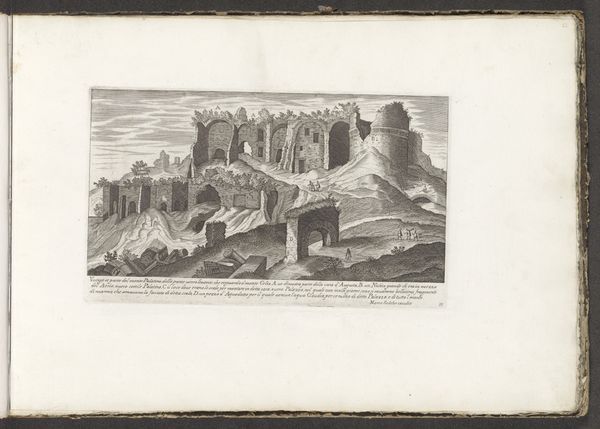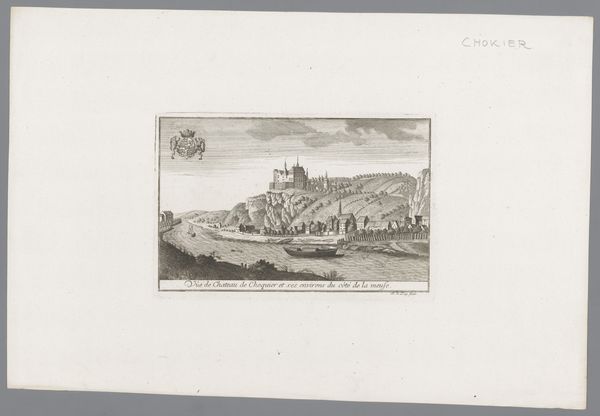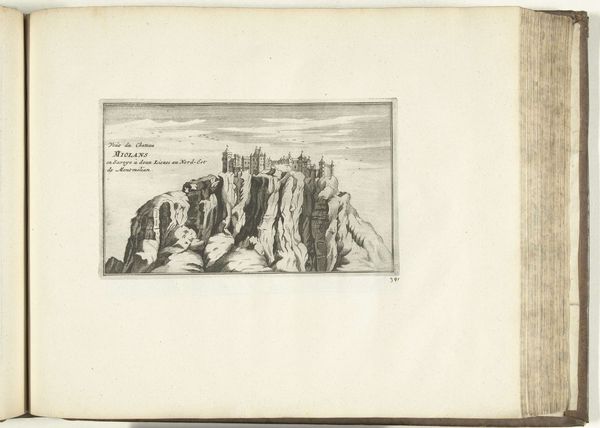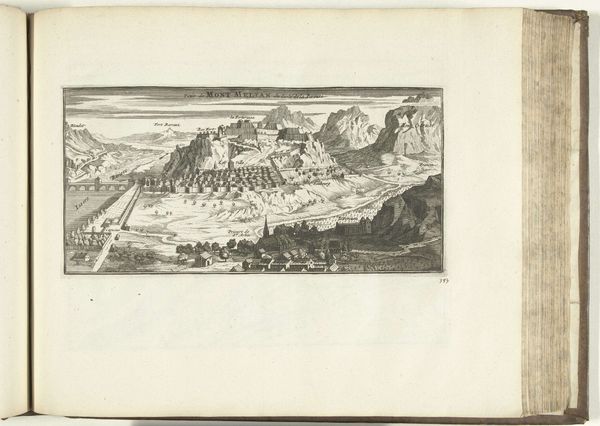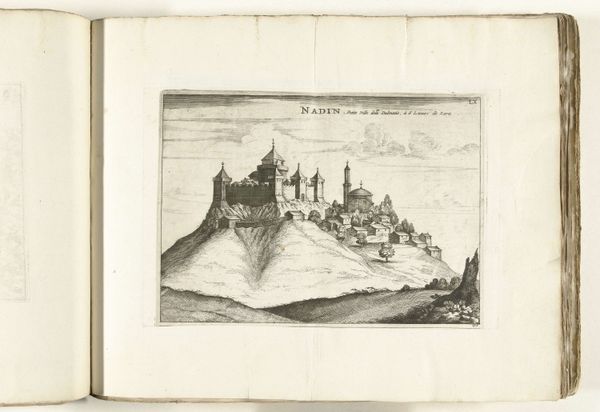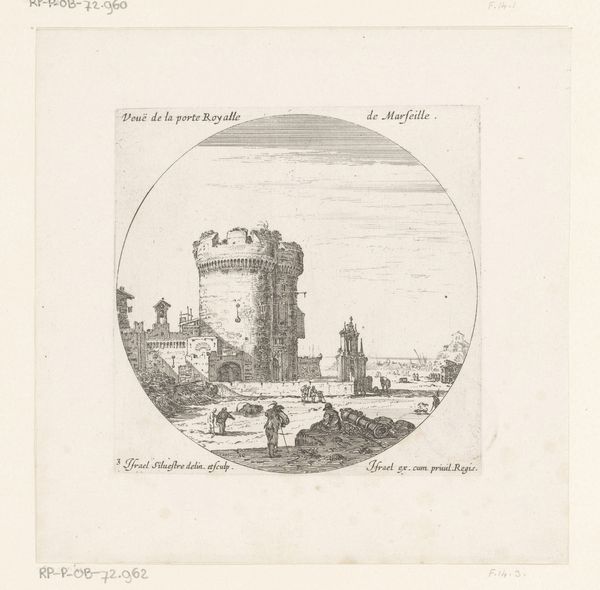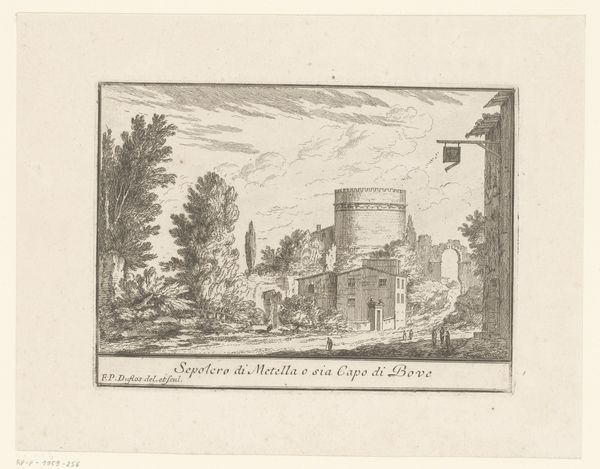
print, etching, engraving
#
dutch-golden-age
# print
#
etching
#
landscape
#
line
#
history-painting
#
engraving
Dimensions: height 99 mm, width 157 mm
Copyright: Rijks Museum: Open Domain
Editor: This etching, "Piramide van Gaius Cestius," created by Claes Jansz. Visscher in 1618, depicts an ancient Roman pyramid. The detailed linework and depiction of nature reclaiming the structure create a melancholic mood for me. What stands out to you in terms of the socio-historical context of its production? Curator: What I notice here, and what truly interests me, is Visscher’s emphasis on the materials of history and its making. The artist, living in the Dutch Golden Age, focuses not just on the image of the pyramid itself, but on rendering brick and stone with a meticulous hand. Consider the sheer labor involved in both the construction of the ancient pyramid and Visscher's intricate printmaking – how does one influence the other? Editor: That's a fascinating way to frame it! I was thinking more about the Pyramid being a memento mori, a vanitas for this period, reminding us about our mortality, the transience of life... Curator: Indeed. The vanitas element certainly plays a role, particularly given the growing taste for landscapes, but perhaps the crumbling texture signals not just mortality, but the economic underpinnings that enabled the construction of monuments such as this in the first place. What kind of systems supported these ancient material legacies, and what are the social conditions in the artist’s time that allow them to depict such relics? How has it decayed through use and what efforts are being done in 1618 to preserve or reuse those materials? Editor: I see your point. Focusing on the tangible aspects really reframes my understanding of its social commentary, making it a study of not just death, but life's material realities. Curator: Precisely! Seeing it in these material terms illuminates its continued relevance, connecting its history and the present. We’re left considering, what are we building, who is building it and what does it say about our values? Editor: Thank you! That's a much more concrete takeaway than where I started.
Comments
No comments
Be the first to comment and join the conversation on the ultimate creative platform.
